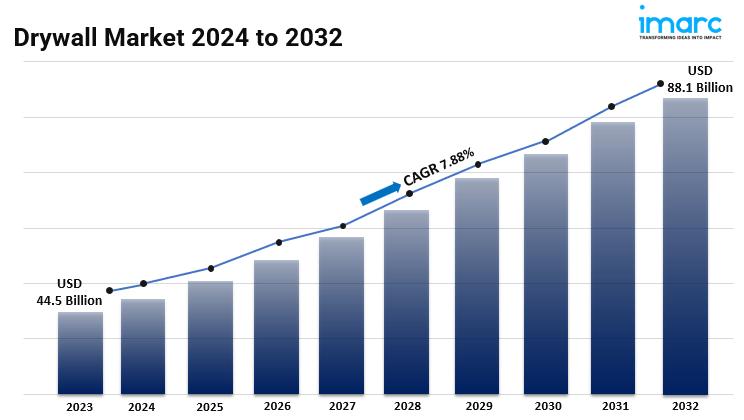
The Future of Drywall Usage
As we look toward the future of construction materials, drywall continues to play a crucial role in both residential and commercial building projects. With evolving technologies and changing industry standards, drywall is expected to undergo several significant transformations in the coming years. In this blog, we’ll explore what the future holds for drywall usage, focusing on the innovations and trends that will shape the market after 2025.
Sustainable and Eco-Friendly Drywall
One of the biggest trends we can expect to see in the drywall industry is a shift toward sustainability. As concerns about climate change and environmental impact continue to grow, construction materials are under pressure to become more eco-friendly.
Drywall manufacturers are increasingly focusing on green technologies to reduce the environmental footprint of their products. This includes the use of recycled materials, such as recycled gypsum and paperless drywall, which can significantly reduce waste and energy consumption during production. Additionally, the development of drywall that is fully recyclable at the end of its lifecycle will become more common.
Post-2025, expect to see more sustainable drywall options that not only meet building codes but also contribute to green building certifications such as LEED (Leadership in Energy and Environmental Design). This shift toward sustainability will likely become a key factor for construction companies looking to meet environmental goals and reduce their carbon footprint.
Enhanced Fire Resistance and Safety Features
Safety remains one of the highest priorities in construction, and fire-resistant drywall will continue to be at the forefront of innovation. In the years following 2025,fire-rated drywall that offers even greater protection. Manufacturers are working to create drywall products that can withstand higherlonger fire resistance times.
Smart Drywall: Integration of Technology
As smart buildings become more common, the integration of technology into drywall is an exciting prospect. Imagine drywall that can interact with other building systems to optimize energy use, monitor temperature and humidity levels, and even detect structural issues before they become problems.
Smart drywall could include embedded sensors that monitor air quality, temperature, or moisture levels, alerting building owners or managers to potential issues like mold growth or water damage. This innovation could also enable drywall to communicate with automated HVAC systems to regulate climate control in real-time, improving comfort and energy efficiency.
These innovations in smart drywall could lead to buildings that are not only more efficient but also more responsive to the needs of their occupants, creating a truly connected and sustainable environment.
Lightweight and Durable Alternatives
As the demand for faster and more efficient construction grows, manufacturers are focusing on developing lightweight drywall options that do not sacrifice durability. These new types of drywall will make transportation, handling, and installation easier and more cost-effective, which will be a huge benefit for contractors and construction teams.
New composite materials are also being explored to create drywall that is both stronger and lighter. These materials could offer greater durability against impacts, making them ideal for high-traffic areas like schools, hospitals, and public buildings. Additionally, improvements in moisture-resistant drywall will help combat the challenges posed by humid environments, making it ideal for use in areas like bathrooms and kitchens.
Customization and Design Flexibility
Future drywall innovations will also provide more options for customization and design flexibility. As architecture and interior design continue to evolve, the ability to create unique, custom shapes and finishes with drywall will become increasingly important.
Drywall’s ability to be molded into different shapes and finishes means it can be used to create visually striking features within a space. Post-2025, drywall will be designed not only for function but also to offer a variety of aesthetic possibilities, including textured finishes, integrated lighting, and even color-changing capabilities. This increased flexibility will allow architects and designers to experiment with new ideas and push the boundaries of traditional drywall applications.
Improved Installation Techniques
In the future, installation of drywall will become faster, more efficient, and more accurate thanks to advances in construction technology. Automation and robotics are expected to play a significant role in drywall installation, helping to reduce labor costs and improve precision.
Additionally, advancements in drywall jointing techniques will allow for quicker installation times with minimal finishing required. Self-healing drywall, which can repair minor cracks or damages on its own, may also become a reality, further streamlining the construction process.
Conclusion
As we move beyond 2025, the future of drywall will be shaped by sustainability, technological integration, safety enhancements, and design flexibility. These innovations will revolutionize the way drywall is used in construction, improving efficiency, safety, and environmental impact.
For contractors, designers, and builders, keeping up with these advancements will be key to staying competitive and delivering cutting-edge, sustainable buildings that meet the needs of modern society. With innovations in fire resistance, smart technology, and custom designs, drywall will continue to be a critical element of the built environment.
Call to Action
Are you ready to embrace the future of drywall in your construction projects? Contact us today to learn more about the latest drywall innovations and how they can benefit your business. Let’s build smarter, safer, and more sustainable buildings together!